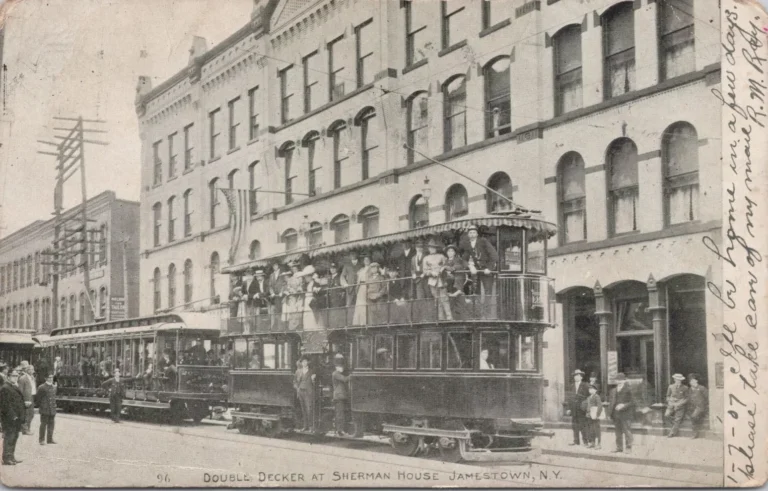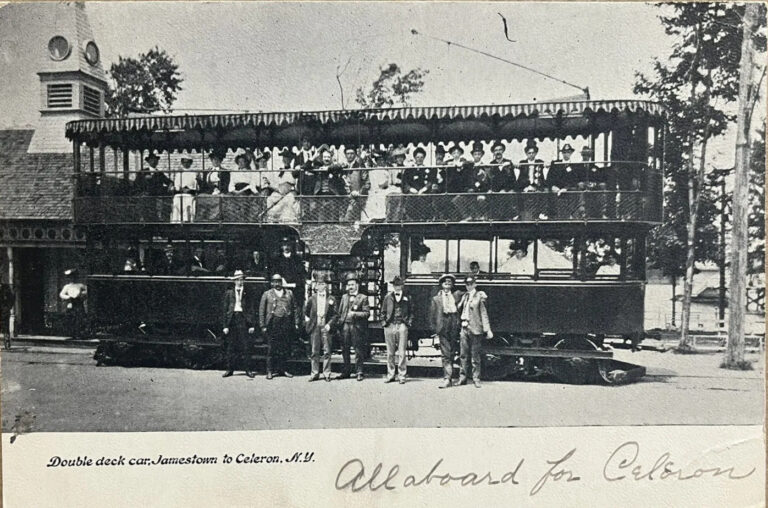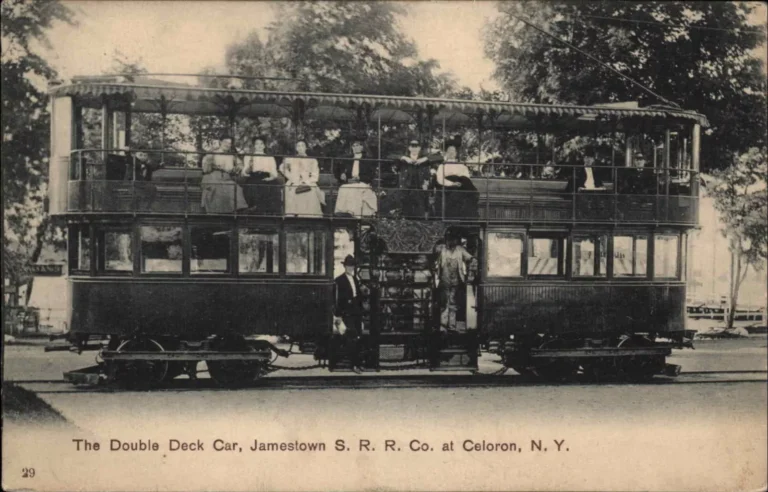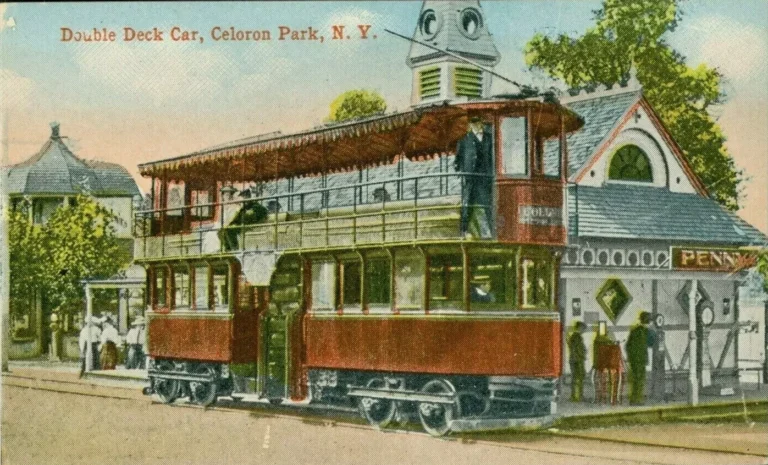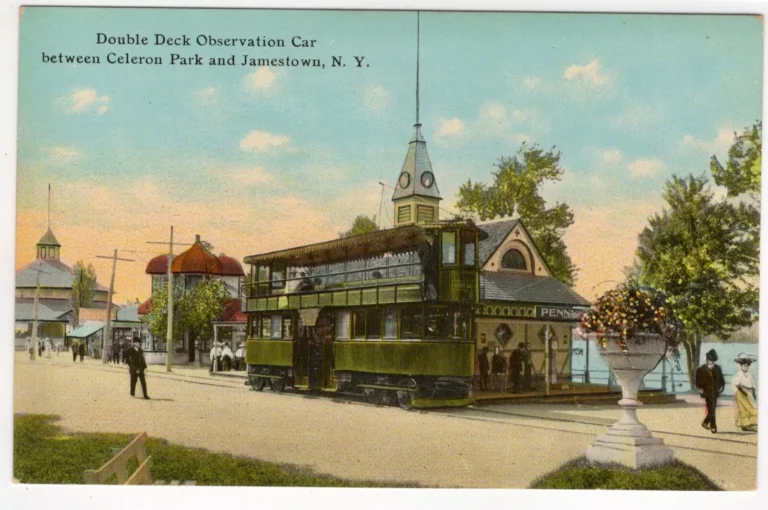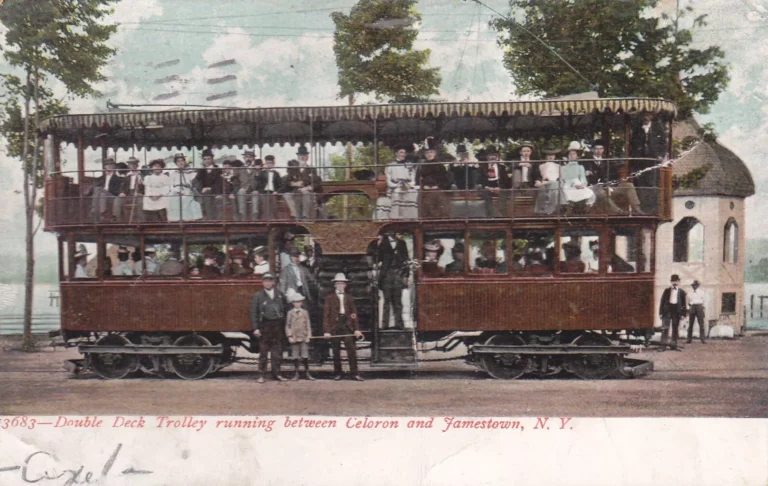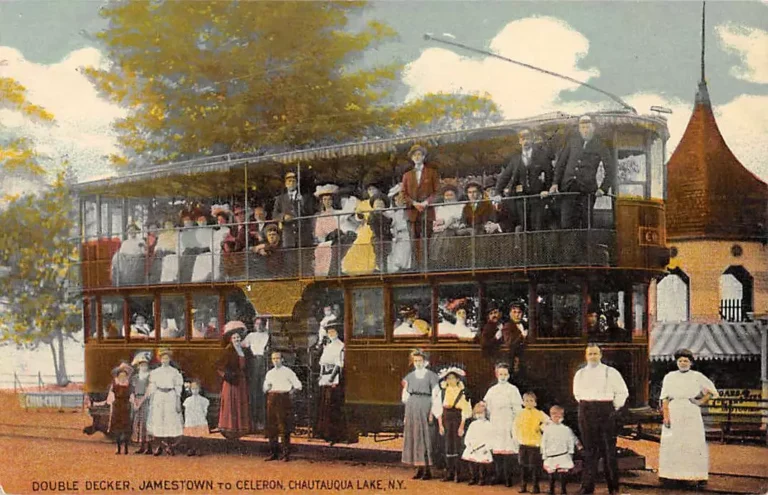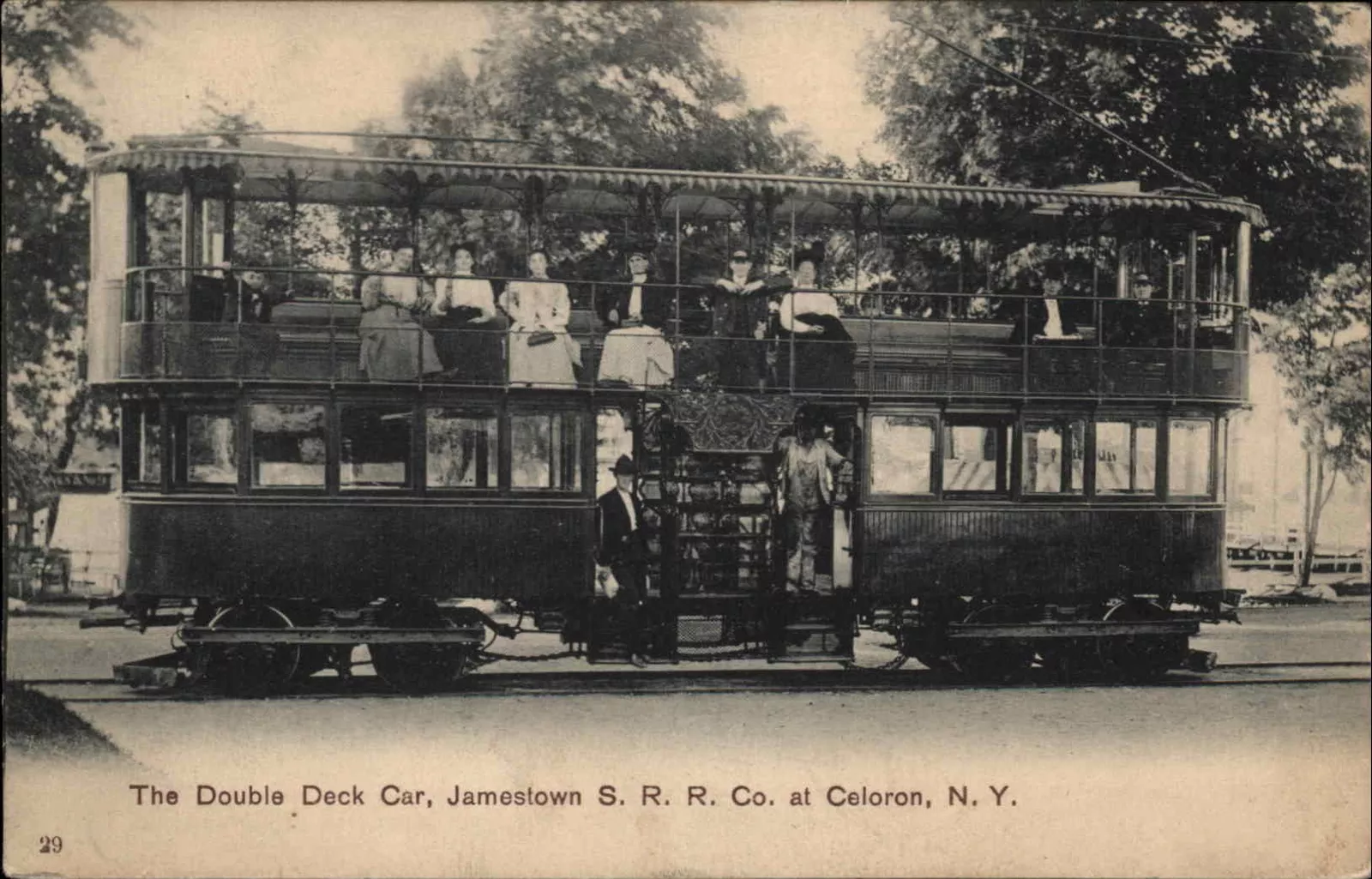
Mr. A.N. Broadhead, president of the Jamestown Street Railway visited the Columbian Exposition at Chicago early in 1893. Two years before he had formed a company which bought the horse car lines in Jamestown, New York, electrified them, and rapidly expanded the routes, both on the city streets and up the west side of Chautauqua Lake to the villages of Lakewood and Celoron. The Lakewood line was complete to the large summer hotels in that village and the Celoron line was building to a planned “Coney Island” park to be built the following year.
Mr. Broadhead not only looked at, but bought one of the demonstration cars, along with two small steamboats and some amusement park equipment. On May 30, 1893 the car arrived in Jamestown without a number, but lettered COLUMBIA in honor of America’s first great exposition. Compared with the little four wheel open cars of the system it was a palace on wheels. The lower enclosed deck had a smoking compartment on one side of the center entrance and a women’s compartment on the other, both richly upholstered. The seats were longitudinal with two arm chairs at each end. The motorman’s cabin was on the second deck, reminding one of a pilot house on a ship. The trolleys were hinged from the front and “controlled by means of an ingenious system of pulleys, skylight and mirrors” according to a CERA Bulletin written by William Watts Jr. The brakes were of a friction type, non air.
By June 30, 1893 the car was ready for the public and ran as a charter to Lakewood. It was then put into regular service as an extra fare car on the Lakewood line. This assignment was short lived. By 1895 it was running to the new Celoron Park according to newspaper reports which tell of it jumping the track in July of that year on its last night trip to Celoron.
Harold Ahlstrom, noted Jamestown railroad historian, recounted the following about the Columbia:
“Though this type of car was sold to a few other properties, it was not a great success and Mr. Pullman was out on the road inspecting and selling. The papers ran quite an article on his visit on June 18, 1897. He rode the car and “was quite pleased with its performance”, so pleased that he gave each crew member a five dollar tip!
The conductor of the car for most of its years in service was a man of large size and girth, who never-the-less was proficient in getting around the two decks of the car to collect every fare. The collection was good, but old employees of the street railway have told me that Mr. Broadhead once offered to give this man the car if he would return all the fares he had kept. Older residents of the Jamestown area have fond memories of their trips to Celoron Park, saying they would often let the other cars go by and fight for a spot on the upper deck of the Columbia. Others have said that the rough roadbed of the Celoron line contributed something of a gentle ocean-wave effect to the well-sprung car that was magnified to riders on the second deck. It was a much photographed car, due partly to the fact that the layover point in Celoron Park was opposite the park photographer. It was a rarity in Western New York and appeared on the post cards of the area almost as often as the Chautauqua Lake steamers and the park itself. The railway had a long steamship dock at the park with rails built out to the end, but all pictures show only small cars running out on it, never the huge double decker as is known to all.
The car was withdrawn from service sometime after World War 1, some reports say it ran as late as 1923. As a young boy I discovered it in the dark rear of the Washington Street carbarn around 1922 or 1923, explored it as much as I could and got very dirty in the process, so I would say it had not run in some time then. In 1926 the Washington St. carbarn was sold and the famous COLUMBIA was junked, but to many people of the area it was the high point of their trip to Celoron in the early part of the century.”
Photographs
Learn More
- Cars of the Jamestown Street Railway. http://www.jamestowntrolley.com/trolley/jsry/jsrycars.htm
- Ahlstrom, Harold. Date unknown. Buffalo Chapter, National Railway Historical Society. From the collection of the Fenton Historical Society in Jamestown, NY.
